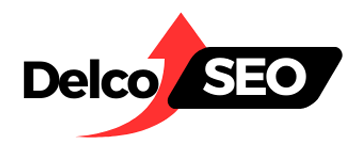Conversion rate optimization and search engine optimization are both important aspects of digital marketing but have two different objectives. They also work in different lifecycle and marketing funnel stages. SEO is more top of the funnel where users are searching for a specific product, solution, or answer to a question. SEO ensures your website shows up for those queries in the search engines. CRO is more in the discovery phase of the funnel where users are on your website, learning more about your company, and considering using your service or purchasing your product. CRO ensures your website is optimized so users take a desired action. Let’s dive in a little more!
Learning More About SEO and CRO
The Objective
SEO: The primary goal of SEO is to improve a website’s visibility and ranking on search engine results pages (SERPs). The goal is to attract organic traffic by optimizing website content, meta tags and descriptions, keywords, and technical aspects of the website.
CRO: The main objective of CRO is to increase the percentage of website visitors who take a desired action, such as making a purchase, signing up, or completing a form. It focuses on optimizing the user experience and conversion funnel to drive more conversions from existing traffic.
The Focus
SEO: SEO focuses on driving traffic to the website by improving its visibility and ranking on search engines. It involves strategies like keyword research, content optimization, link building, and technical SEO.
CRO: CRO focuses on converting the existing traffic into customers or leads by optimizing elements on the website such as landing pages, CTAs (Call-to-Actions), forms, checkout processes, and user experience.
Timeline and Impact
SEO: SEO can take some time to show results (often 4-6 weeks) and it is a gradual process. This is because of all the websites that the search engines have to crawl each day. However, the impact of SEO can be long-lasting and lead to sustained organic traffic growth.
CRO: CRO can lead to more immediate results as improvements are made to the website’s conversion elements. Even small changes can have a significant impact on conversion rates and ROI in a relatively short period.
Metrics
SEO: Metrics for SEO success include organic website traffic, keyword rankings, backlinks, domain authority score, and search engine visibility. The focus is on attracting new and relevant traffic to the website.
CRO: Metrics for CRO success include conversion rates, bounce rates, average order value, click-through rates (CTRs), and conversion funnels. The focus is on optimizing the user journey and increasing conversions.
Integration
SEO and CRO: While SEO and CRO are different strategies, they are complementary and can work together to improve overall digital marketing performance. A well-optimized website with high visibility (SEO) can attract more traffic, which can then be converted more effectively (CRO) through optimized user experiences and conversion paths. In general, SEO focuses on driving traffic to the website, while CRO focuses on converting that traffic into customers or leads. Both strategies are essential for a well rounded digital marketing approach aimed at maximizing online success.
Is CRO worth the investment?
Yes, it is worth the investment for several reasons.
Maximizing ROI: By improving the conversion rate of your website, you can generate more leads, sales, or other valuable actions from your existing traffic. This can lead to a higher return on investment (ROI) from your digital marketing efforts. In addition, the more users convert on your website and the more time users spend on your website, increases your SEO rankings as it sends a signal to Google that your site is providing valuable information.
Efficient Use of Resources: CRO allows you to make data-driven decisions and prioritize optimization efforts based on what actually improves conversion rates. This can improve the efficiency of resources and provide more effective strategies.
Competitive Advantage: A well-optimized website that provides an enhanced user experience and converts visitors effectively can give you a competitive edge in your industry. It can enhance your brand reputation and customer satisfaction.
Long-Term Impact: CRO initiatives often have a long-lasting impact on your website’s performance. Once you’ve identified and implemented successful conversion optimization strategies, they can continue to benefit your business over time.
Better Customer Insights: CRO techniques such as A/B testing, heatmaps, and user feedback analysis, provide valuable insights into customer behavior, preferences, and pain points. This information can guide not only your CRO efforts but also other aspects of your business strategy like SEO.
Adapting to Changes: CRO allows you to adapt to changes in consumer behavior, industry and marketing trends, and technology. As technology and information evolve, continuously optimizing your website for conversions ensures you stay relevant and effective.
Improved User Experience: CRO focuses on enhancing the user experience, which leads to higher conversion rates, customer satisfaction and loyalty. A positive user experience can result in repeat business and referrals.
Ultimately, the decision to invest in SEO or CRO depends on factors such as your business goals, budget, current conversion rates, and the competitive landscape. However, for many businesses, the potential benefits of both search engine optimization and conversion rate optimization in terms of increased conversions, improved efficiency, and a better overall online presence make it a worthwhile investment.
Tell us about your business and goals.
We are here to help

Sal Graci has over 20 years experience helping companies grow their business through SEO. He has worked for agencies, had his own agency and continues to act as a SEO consultant for many businesses in the Delaware County, PA area. He also has published many articles on search engine optimization and is considered an expert in the field.

